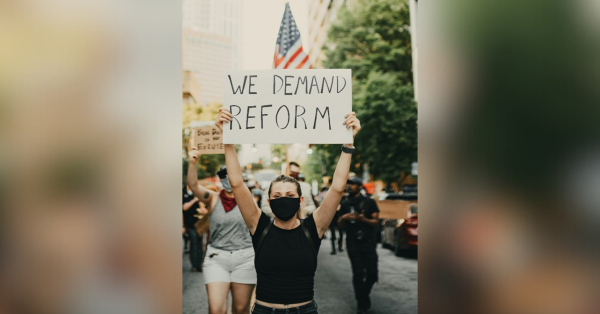Sarah Palin vs. The New York Times: How a Lawsuit Plays into the Right’s Attack on the Media
Sarah Palin’s lawsuit against the New York Times has failed after the Judge threw out the case, arguing that Palin’s team failed to adequately prove that the Times had acted with “actual malice.” The suit, which involves an editorial from the Times, is increasingly symbolic of the rights fight with mainstream media. The editorial, titled “America’s Lethal Politics,” published in 2017, was corrected the next day by the main New York Times opinion account and was quickly updated on the website with a public apology. Palin still pressed on with the suit and fought several years to get her day in court. Despite the recent ruling, the GOP’s generally hostile attitude towards the media signifies a dangerous glint on Republican politics.

To understand the significance of Palin’s lawsuit, it is critical to understand what prompted the suit in the first place and what prompted its defeat. The case brought by Palin came after the New York Times released an editorial about the increasingly violent rhetoric in American politics. Using the shooting of Gabby Giffords and several acts of political violence as an example, the Times‘ editorial team pointed to said violent rhetoric as a threat to the public discourse and the role guns played in that rhetoric in destabilizing the country. Through their article, the Times incorrectly implied that a map by Palin’s Political Action Committee was connected to the shooting of former Arizona Representative Gabby Giffords and several others. The basis for this claim was the map having bullseyes on several congressional districts, which the Times incorrectly asserted was partially responsible for inspiring the shooter.
Then-editor James Bennet later apologized and acknowledged the mistake, pointing to a rushed deadline being responsible for the error. The Times soon corrected the error and released an apology for their mistake. Palin soon sued, alleging defamation, which eventually failed.
We published an editorial last night on the shooting at the G.O.P. men’s baseball team practice field in Alexandria.
— New York Times Opinion (@nytopinion) June 15, 2017

While it is important to recognize an error when it occurs, especially when it comes to the media, the underlying problem with Palin’s suit is that it fundamentally fails to meet the standards of defamation. In New York Times v. Sullivan (1964), The Supreme Court heard a defamation case against The New York Times involving a series of ads released in the paper supporting civil rights. Those ads, though well-intentioned, had minor errors that led L.B. Sullivan, a city commissioner in Montgomery, Alabama, to sue the Times despite not being mentioned in the ads. He was not the only one to use this tactic against civil rights advocates and the Northern press. Many segregationists used allegations of defamation to silence newspapers that reported on the continuous violation of civil rights at the time. An Alabama court awarded Sullivan $50,000 before it went to the Supreme Court, and they eventually ruled in favor of the Times and established a new precedent.
Under that precedent, a plaintiff’s defamation claim must have some evidence that the publisher knew the information they were publishing was false or exercised a serious degree of negligence in pursuing the facts. Additionally, plaintiffs must establish that they faced serious injury to have a basis for a suit, which is known as standing. And according to US District Judge Jed Rakoff, Palin’s suit meets neither of those standards, and the jury concurred not long after that.

At the core of this case is what constitutes responsible coverage and the limits of free speech and – perhaps more importantly – whether human error is a sufficient justification for protection from legal punishment. Some conservative scholars and pundits already see an opportunity in Palin’s suit. New York Post pundit Kyle Smith has gleefully supported the case, seemingly asserting that the media has covered for left-wing violence. However, more mainstream figures may also prove receptive to Palin’s position, namely, Supreme Court Justices Neil Gorsuch and Clarence Thomas. In a 2019 concurrent opinion, Thomas argued that New York Times v. Sullivan “were policy-driven decisions masquerading as constitutional law” and lamented that the Court did not apply an originalist understanding of the First Amendment. Gorsuch, by contrast, pointed to the state of fake news in the online world and the24-hour news cycle as an example of current precedent being outdated.
The risk of overturning the current precedent is that it could cause what is known as a “chilling effect” on public discourse. Rather than having to prove that a person was being malicious in their writing, a plaintiff could successfully sue someone for errors they make in said writing, effectively making a human error a basis for the suit, the very thing that Sullivan was supposed to prevent.
Palin has already appealed the District Court’s ruling and could appeal again if she fails to meet the proper standard. She may even pursue it to the Supreme Court, putting press freedom at risk. If Palin’s case were to make it to the Supreme Court, she could find a sympathetic audience, perhaps even a majority – though that is not guaranteed. As it stands right now, there is a strong impetus on the right to suppress content in the news that they find offensive. As former president Trump once said, “We’re going to open up those libel laws. So when the New York Times writes a hit piece which is a total disgrace or when the Washington Post, which is there for other reasons, writes a hit piece, we can sue them and win money….”












